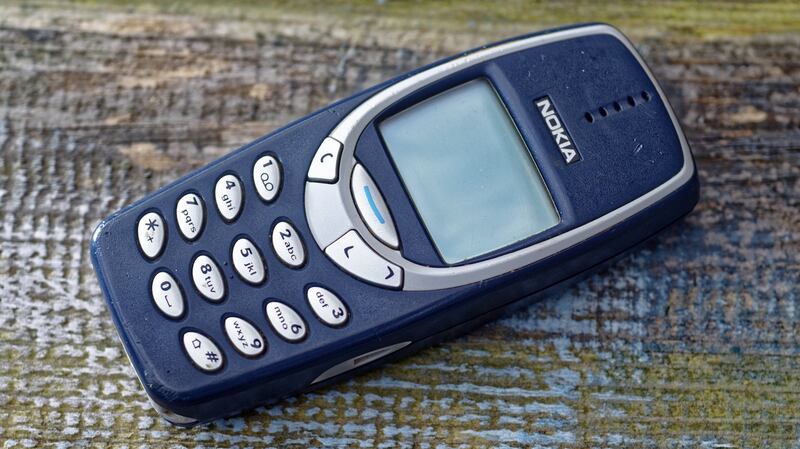Mobile phones are responsible for a lot of things. Instant access to friends and family, no matter where you – or they – are. Information at our fingertips. Constant stimulation and never being bored, ever.
But that any time, any place, anywhere ease of access has also created problems. Smartphone addiction is a recognised issue. In the past few years, we have become even more dependent on our devices for work and leisure, as more people work in a hybrid fashion or remotely. Covid-related lockdowns also locked some patterns in place that pushed socialisation more online too.
Thankfully some things haven’t endured. Regular Zoom sessions have largely been replaced with in-person social occasions where possible, and Covid quiz night has given way once more to the regular pub quiz.
[ How – and why – I got rid of my smartphoneOpens in new window ]
Still, you might find you reach for your phone a little more often than you would like. How much of a problem that is depends on your own personal situation, but if you have decided things have got out of hand, what can you do?
READ MORE
What technology gives, technology can also take away – or at least help control.
Screen time
The first step is to see the extent of the problem. Both Apple and Android have tools built in to the mobile operating systems that will allow you to check out how long you are spending on your phone each day – and what apps you spend the most time on.
For Apple, it is Screentime; for Android, it is Digital Wellbeing. You get an overview of your smartphone activity every week, with an average of the amount of time you spent with your phone active each day.
It can add up to some disturbing reading. But those screen-time tools can also allow you to set limits for individual apps to make sure that if you are on your phone, you aren’t losing time in black hole apps that are mindlessly wasting your time.
The only problem is that that method relies on you to stick to those limits. Unless you hand over control of your screen time to a third party – probably not practical for most adults – you have the code you need to override them.
The Centre for Humane Technology, a non-profit, recommends making it more difficult to access apps by not saving passwords to access the services, forcing you to type in the password each time you want to access it, and hiding the apps from your home screen so you are less likely to check them regularly.
[ Smartphone addiction: ‘They are weapons of mass distraction’Opens in new window ]
Greyscale screens
There are other tools you can use to discourage constant scrolling. All those bright colours make your phone an attractive, eye-catching thing to look at.
What happens if those colours go away? You are less likely to spend time staring at it. Use the accessibility settings on your device to set your screen to greyscale, making your phone instantly less appealing.
No more notifications
Notifications are the ping that keeps pulling us back. Every time your phone vibrates, you feel compelled to look at it for fear of missing something important, when it’s more likely that it’s a game update or a shopping app trying to tempt you to spend more money.
While turning off all notifications isn’t a practical option for everyone, you could dramatically reduce the number of apps that are allowed to send them, keeping it to just the essentials. And turn off the red notification badges on apps too; they are designed to keep pulling you back in and suck up your attention.

The Irish economy has grown rapidly in recent years, how long can it continue?
Reduce toxic engagement
Social media seemed like a good idea when it started, but the past few years have shown just how toxic it is for our mental health. And it has only got worse in recent months, as changing rules on certain platforms have shifted the public discourse there to a more confrontational tone.
Arguing on the internet is a hobby for some people, and you can easily get sucked in.
Unfollowing accounts that you find yourself engaging in unnecessary conflict with and muting threads of arguments you don’t want to get sucked into will make your online life better – and you can safely ignore the chants of “echo chamber” that will inevitably follow.
If you wouldn’t stay in a room where random strangers shout their opinions loudly at you, why subject yourself to them online?
Go tech-free
You don’t have to give up everything, but the Center for Humane Technology recommends creating tech-free spaces in your home.
That could be banning devices at the dinner table, or keeping them out of the bedroom. Buy a traditional alarm clock, and only charge your phone outside the bedroom. It also recommends scheduling some tech-free blocks of time in the morning and evening, giving you a break from screens and opening your time up to more creative pursuits.
Ready to give up your smartphone?
If you have decided that smartphones are just too much for your everyday life, and all the tools and tricks in the world aren’t going to help, you could swap it out for a so-called “feature phone”.
Those of us old enough to remember the first mobile phones that hit Ireland will likely recognise these as just basic mobile phones. No touchscreens, no high-speed internet connections and very few add-on apps that drain the battery and keep you coming back for more.
There are some positives about these phones. Not only do they lack the addictive apps that suck you into your phone and keep you doom-scrolling for hours, the lack of touchscreens and multiple functions means the battery lasts for a lot longer than we have become accustomed to. You can charge these phones every few days, use them for calls and still have battery left over.
They also tend to be more durable, with cheaper fixes if the worst does happen. Forget about paying €200-plus for a screen fix; the entire phone can be replaced for less than €100 in most cases.
Even if you don’t want to replace your smartphone permanently, they can be a nice break without sacrificing all methods of communication.
So what are the options?

Nokia
Nokia’s range of feature phones includes blasts from the past such as the 3310 and the 6210. But, like the company, these aren’t just a copy of the original; they have a few new additions. HMD Global, which now makes Nokia phones, has added cameras and data connections to the devices, bringing them into the new era of communication without forcing them into the smartphone category.
The Nokia 6310 (€65, Expert Electrical) was a classic phone, and one that certain people – former taoiseach Enda Kenny included – held on to long after the smartphone era had well and truly taken hold.
So there were a few celebrations when Nokia decided to revive it. The 6310 supports only 2G networks, so no chance of an email slipping through, and has a very basic camera.
Another option is the 8210 (€70, DID), which has a 2.8-inch display, a basic camera and a 1450mAh battery that will last days on standby. Like the 6310, it comes with Nokia’s S30+ operating system, and the only games you’ll find on there are a handful of more basic ones – Snake, Tetris, Doodle Jump and so on.
It has 4G support too, which is important for when they eventually phase out the older networks. And both phones come with a headphone jack and a built in FM radio.
Doro
Doro phones, like Emporia, are aimed at an older age group. They come with extras such as an emergency button that can be assigned to a trusted contact, and are hearing-aid compatible. But they are also solid feature phones that can give you a break from the information overload that smartphones bring.
The Doro 6880 (€120, Harvey Norman) is a flip phone, with a 2.8-inch display, a 2 megapixel camera and high-definition voice calls.
The battery seems tiny at 1000mAh, but you get seven hours of continuous talk time out of it, which should keep even the chattiest of people happy. It also has Bluetooth and 4G, so you can connect it to accessories if needed.




















